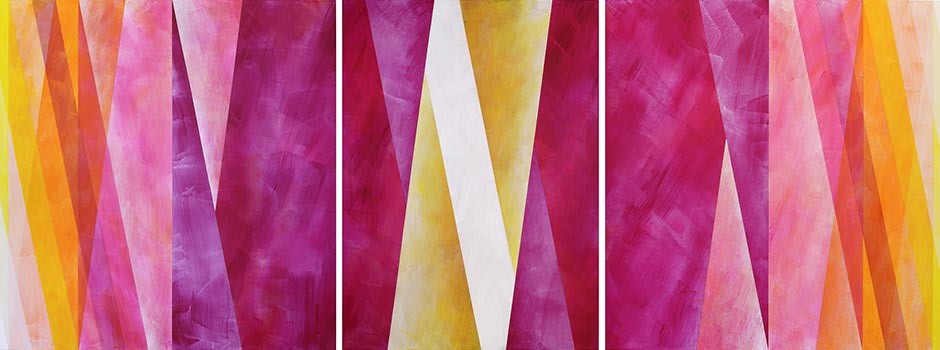
EXHIBITION AT MEEM GALLERY (May 12 - July 31, 2014) Bilqis, a Series of Recent Paintings by Kamal Boullata
May 10, 2014 Exhibition

Transparency and spatial ambiguity are the subjects of a series of large paintings whose title 'Bilqis' is borrowed from the Arabic name of the queen of Sheba. According to the Qur’anic legend, upon entering the court of King Solomon, Bilqis mistaking its glass floor for a sheet of water lifted up her skirt to avoid getting it wet. Over the centuries, glass floors, fountains and ceramic walls alluding to glistening surfaces touched by water were combined to become the aesthetic hallmark of all palatial buildings in the Islamic world. In the process, symmetries and spatial ambiguity in visual perception was to foster the evolution of geometric abstraction in Islamic art.
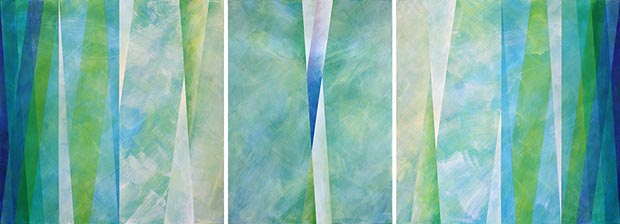 Kamal Boullata / Bilqis 4, 2013 / Courtesy of Meem Gallery
Kamal Boullata / Bilqis 4, 2013 / Courtesy of Meem Gallery
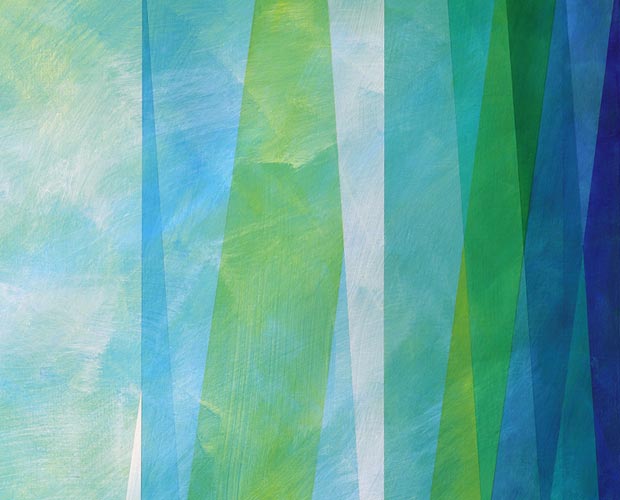 Kamal Boullata / Bilqis 4, detail, 2013 / Courtesy of Meem Gallery
Kamal Boullata / Bilqis 4, detail, 2013 / Courtesy of Meem Gallery
The series composed of 15 geometrically abstract acrylic paintings on canvas, was conceived to be displayed in the form of 5 triptychs. In each triptych, vertical and diagonal lines intersect at variable anglesto create a horizontal composition. The rhythmic sequence of forms is set in accordance with a geometric formula of proportions originally evolved in 10th century Baghdad. The transparent layers of free-flowing brush strokes are sharply delineated by the precision of hard-edged painting. The contrasting combination recalls the words of Novalis, ‘Chaos in a work of art should shimmer through the veil of order.’ The issuing contrast of overlapping forms stirs a sense of movement punctuated by intermittent flashes of light. Contrary to a perspectival illusion of space, foreground and background become interchangeable. Seeming symmetries and refractions are perceived through the interweaving of polygons and triangles whose correspondence recalls ambiguities intrinsic to geometric arabesques.
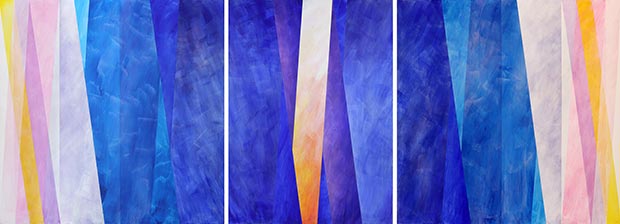 Kamal Boullata / Bilqis 2, 2013 / Courtesy of Meem Gallery
Kamal Boullata / Bilqis 2, 2013 / Courtesy of Meem Gallery
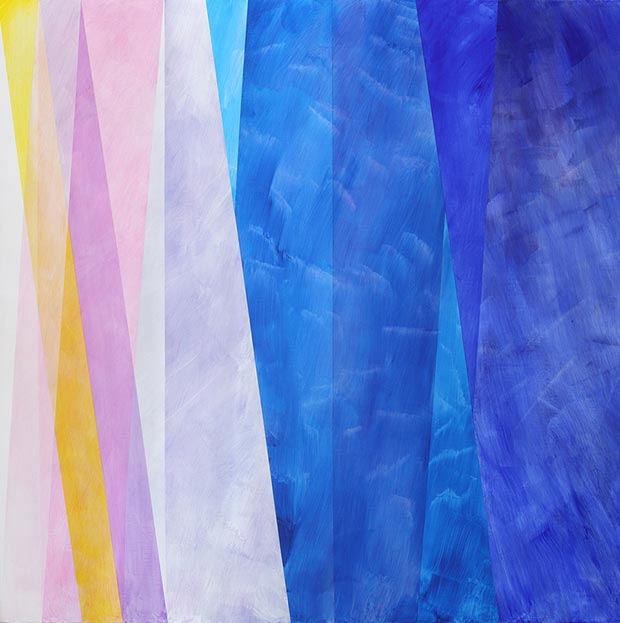 Kamal Boullata / Bilqis 2, detail, 2013 / Courtesy of Meem Gallery
Kamal Boullata / Bilqis 2, detail, 2013 / Courtesy of Meem Gallery
Kamal Boullata was born in Jerusalem in 1942. He is a graduate of the Fine Arts Academy of Rome and the Corcoran Art Museum School in Washington, DC. His work may be found in private collections in the USA, Europe and the Arab world. Public collections holding his art include the British Museum, London; Alhambra Islamic Museum, Granada; Darat al-Funun, the Khalid Shoman Foundation, Amman; Musée de l’Institut du Monde Arabe, Paris; New York Public Library, New York; Sharjah Art Museum, Sharjah; Mathaf: Arab Museum of Modern Art, Doha; Bibliothèque Louis Notari, Monaco.
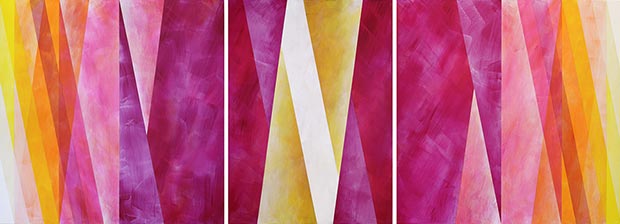 Kamal Boullata / Bilqis 3, 2013 / Courtesy of Meem Gallery
Kamal Boullata / Bilqis 3, 2013 / Courtesy of Meem Gallery
 Kamal Boullata / Bilqis 3, detail, 2013 / Courtesy of Meem Gallery
Kamal Boullata / Bilqis 3, detail, 2013 / Courtesy of Meem Gallery
In 1993 and 1994, he was granted a Fulbright senior scholar fellowship to conduct field research on Islamic art in Morocco and Spain. In 2001, he received a Ford Foundation grant to research Post-Byzantine painting and the origins of modern art in Palestine. During the academic year 2012/13 he was elected as a fellow of the Wissenschaftskolleg zu Berlin, Institute for Advanced Study in Berlin. The studies, sketches and the series of paintings on exhibition were conceived during his residency at the Institute. Boullata’s writings on Islamic and modern Arab art have appeared in numerous academic publications. Books he has edited include If Only the Sea Could Sleep: Love Poems by Adonis (2003), and Belonging and Globalization: Critical Essays in Contemporary Art and Culture (2008). Books he has authored include Istihdar al-makan: Dirasat fi al-fan al-tashkili al-filastini al-mu’asir (2000); Palestinian Art from 1850 to the Present (2009); and Between Exits: Paintings by Hani Zurob (2012). Kamal Boullata has lived most of his life in the USA and in France. At present, he lives in Berlin.
Comments
Add a comment